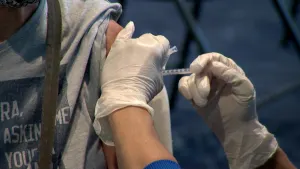More Stories
In 2021, as coronavirus restrictions begin to lift, many American workers and students will return to workplaces and campuses. Left behind will be pets who have become accustomed to their humans staying home with them.
Below are some tips on how to prepare them, and signs of distress to watch for, from Purdue University professor Candace Croney:
What to do now
1. Start practicing to give them a routine and sense of predictability, taking small steps incrementally.
2. Provide them with toys and treats to focus on while you work in a different room.
3. Take walks without them; don't take them on every car ride.
4. Even if the weather isn't good for driving, pull your car out of the garage and sit for awhile.
5. If you don't drive, find another venue to create space.
6. If you feel your pets will find it hard to adjust, consult your veterinarian to make a plan.
Signs for concern after returning to the workplace
7. Changes in eating or drinking habits.
8. For cats, common signs of distress are inappropriate urination or defecation outside the litter box.
9. For dogs, excessive whining and barking, leaving treats untouched, changes in toileting habits.
10. Destructive behavior.
11. Acting abnormally frantic when you return home.
What to do if you see pets not adjusting
12. Call your veterinarian before things get worse.
13. Use baby-type monitors to check on your pets remotely.
14. Have a friend or paid dog-walker stop by.
15. Leave on soft music playing or TV talk shows (not the kind where they yell at each other).
An Associated Press report contributed to this guide.
More from News 12

Hometown Heroes in Connecticut

Nobel in medicine goes to 2 scientists whose work enabled creation of mRNA vaccines against COVID-19
0:29

Connecticut health commissioner fired during COVID settles with state; dismissal now a resignation
0:21

Biden administration announces $600M to produce COVID tests and will reopen website to order them
2:00

Should you get a COVID booster? Hartford Healthcare doctor says wait
0:22
